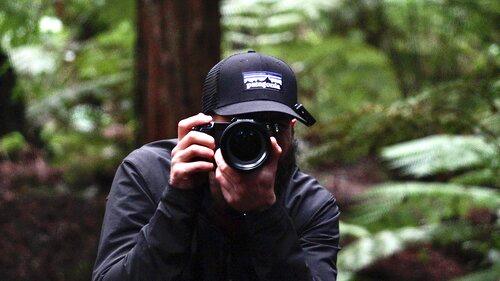
Medium Format Landscape Photography with the Fujifilm GFX 50S II
Share
A New Zealand medium format landscape photography story
The Fujifilm GFX 50S II is a 50MP is excellent for medium format landscape photography, and so is the Fujinon GF 30mm lens; and the Fujinon GF 45-100mm lens. In today's video, we take the Fujifilm GFX 50S II, the Fujinon GF 30mm Lens and the Fujinon GF 45-100mm lens out to take some landscape photographs for the first time. For today's landscape photography, we will be going to two locations in New Zealand. The first location is the Redwoods in Rotorua and, the second location is Mount Pirongia in the Waikato. I hope you enjoy the video!
Here are some quick specs
Fujifilm GFX 50S II Specs
The Fujifilm GFX 50S II is a 43.8mm x 32.9mm 51.4MP 14 bit medium format camera with an X-Processor 4 chip. The physical size of its sensor is 1.7x of a 35mm sensor. It has an incredible dynamic range due to its unique light-collecting pixel design. There are nineteen film simulations that replicate Fujifilm’s traditional film stocks. The in-body stabilisation provides up to 6.5-stops of vibration reduction. The body is 37.1 ounces (900g) and measures 4.1 inches (104.2mm) high and 3.4 inches (87.2mm) deep. The construction is highly rigid magnesium alloy, and it is weather-resistant and will operate at 14°F (-10°C). The GFX50S II features a pixel shift multi-shot function that is capable of creating 200MP images.
GF30mm F3.5 R WR Specs
The GF30mmF3.5 R WR provides a wide 24mm (84° angle) field of view in a 35mm format. It has 13 elements in 10 groups (includes 2 aspherical, 2 ED elements). Its aperture range is F3.5 to F32 in 1/3 EV stops, and it can close focus at 32cm. It weighs 510 grams, and its filter thread size is 58mm.
GF45-100mm F4 R LM OIS WR Specs
The GF45-100mmF4 R LM OIS WR provides a 36-79mm (62.6°-30.6°) field of view in a 35mm format equivalent. It has 16 elements in 12 groups (includes 3 aspherical, 1 ED and 1 superED element). Its aperture range is F4 to F32 in 1/3 EV stops, and it can close focus at 0.65m (Wide), 0.82m (Telephoto). It weighs 1005 grams, and its filter thread size is 82mm.
Fujifilm GFX50SII and 45-100mm GF Lens - Sample five image stitch Panoramic Photo

Fujifilm GFX50SII and 45-100mm GF Lens - Sample Pixel Shift Image
![]()
Some Initial thoughts
Good
-
Image quality - Sensor design produces low signal to noise ratio, meaning the ISO noise is low, Dynamic range and colour in the recovered shadow areas is excellent, sharpness, colour, film simulations
-
IBIS - 6.5 stops - depending on your hand hold technique, 0.5sec exposures can be acheived without a tripod.
-
Size and weight - Camera and two lenses fits into a small F Stop Pro ICU.
-
Ergonomics
-
LCD Screen and view finder
-
Low light auto focus
-
Battery life is ok for how I will use it
-
Top plate LCD display is nice but I prefer the film style dials
-
Graduated filters not required
Improvements
-
16 Bit RAW colour (16bit TIFF in body RAW conversion is possible)
-
Rendering time of long exposure images over 2 or 3 seconds is the same as the exposure time when Noise Reduction is switched on.
-
Fuji Raw Studio is great for previewing the RAW files but it is a bit clunky. I could not get it to export the files from the SD card in the GFX to my iMac.
-
Sometimes, the images will not show up on the SD card on my card reader or during import in Lightroom direct from my card reader. The files can be imported directly from the camera using the usb cable.
-
Display the zoom focal lengths on the LCD screen
-
Touch screen could have touch to focus and a separate touch for the spot light meter.
Things to note
My late 2014 5k iMac struggles with the file sizes
Moving objects in Pixel Shift photos will appear blurred and pixelated.
Fujifilm GFX50SII sample images made with the Fujinon GHF 30mm and GF 45-100mm GF Lenses






